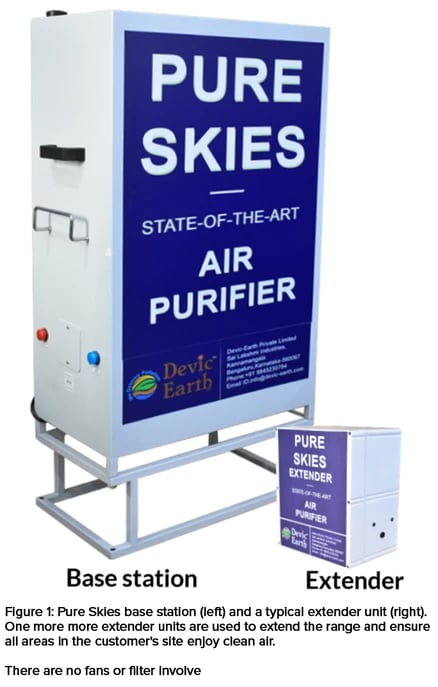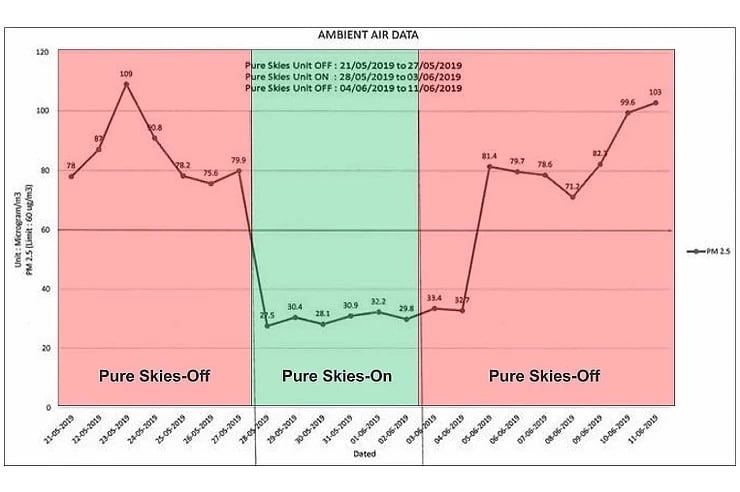Pollution down by 65% in Delhi with Pure Skies
by Vidhya Sreenivasan
21 Minute Read
Air pollution - specifically PM2.5 and PM10 - reduces by 65% and 28%, respectively, with Pure Skies at a distance of 2 km away, finds a study by an independent 3rd party testing body.
Pure Skies is a novel air pollution control technology that uses pulsed radio waves in the Wi-Fi spectrum (2.43-2.45 GHz) to accelerate the natural clearance of certain particle and gaseous pollutants. This allows Pure Skies to cover large areas compared with conventional air purifiers – even outdoors. Pure Skies hits the worst offenders hard – PM2.5, PM10 – which cause cancer and diseases of the lung, heart, and brain. For improving outdoor air quality, a typical Pure Skies installation consists of a base station plus several extender units to ensure uniform coverage and clean air across the target area.

Devic Earth was looking for a high-quality independent testing agency to evaluate Pure Skies. We wanted a lab with senior staff experienced in air pollution monitoring, availability of
multiple reference grade monitors, and a reputation for quality.
Next, we looked for a place with lots of air pollution. Naturally, we picked Delhi.
What was done. A Pure Skies base system was installed on the rooftop of a 4 story building in the Mayapuri area of Delhi. Because this is an area with predominantly low rise buildings, the range of Pure Skies would be expected to be far.
The test lab installed several reference grade air quality samplers placed 2-km away according to standard siting methods for air quality monitors.
Air quality measurements took place continuously over 3 weeks – an initial 1-week baseline, a second week with Pure Skies on, and a final week with Pure Skies off. Throughout the duration of the test, weather data and traffic patterns were recorded to correlate with pollution levels. The test took place in June 2019. All data recording and analysis were performed by the test lab.
And the winner is... The two most important particle pollutants – PM2.5 and PM10 – reduced by 65% and 28%, respectively, when Pure Skies was on, then returned to the previous baseline levels when Pure Skies was off.

One Pure Skies system brought down pollution due to PM2.5 by 65% in a 2-km radius. Imagine what a network of Pure Skies placed across a city could do for clean air.
Clean air costs one samosa. By our calculations, a city-wide network would cost just Rs. 17 (USD 0.25) to provide clean air per person per year in an Indian metro – that’s less than the cost of a samosa!

.svg)
.webp?width=1080&height=1080&name=Free%20Case%20Study%20Steel%20Plant%20(1).webp)







Post Comments